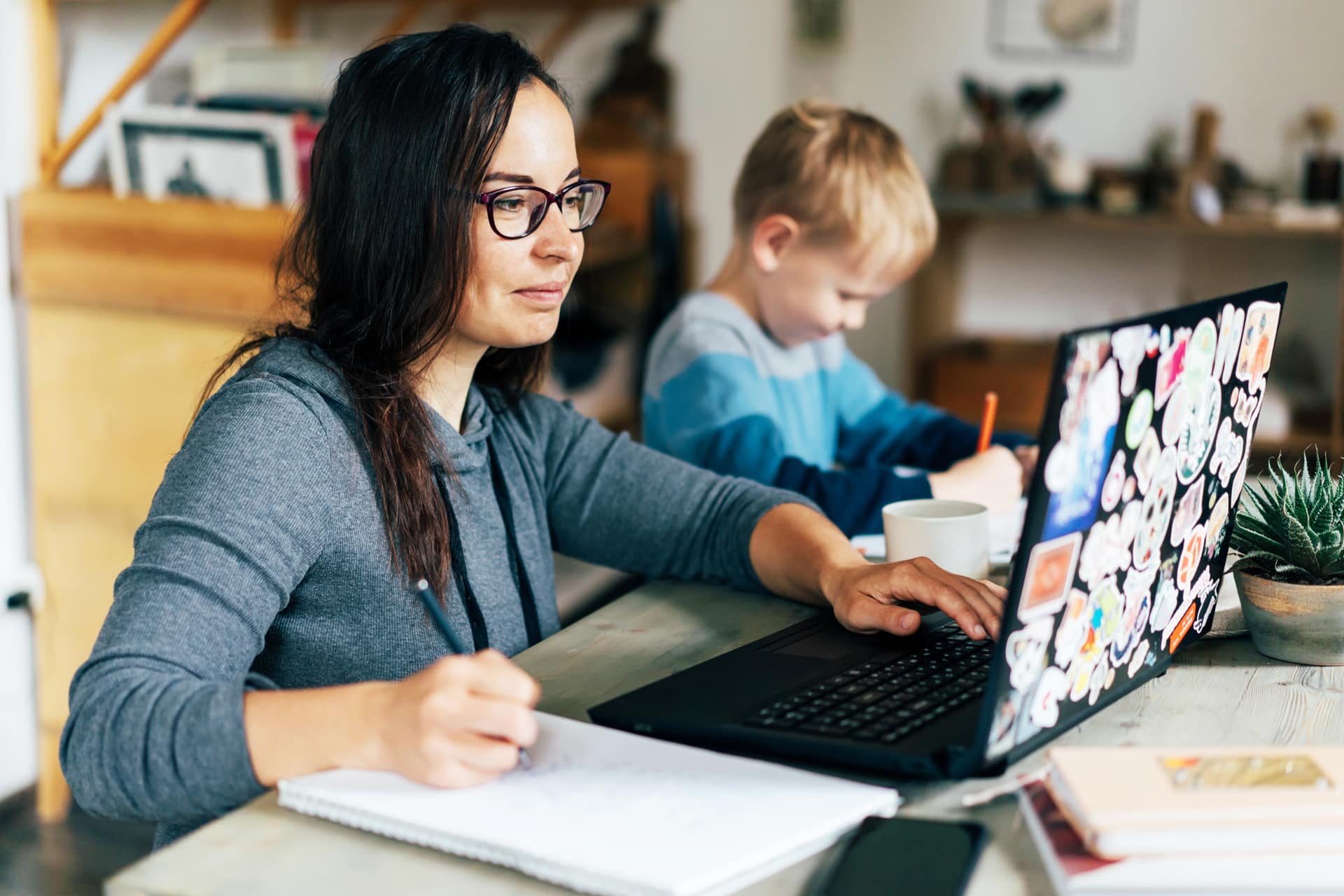
As our homes have transformed into our offices, daycare centers, and classrooms, it can feel difficult to disconnect from the all-pervasive technology that creeps into every aspect of life. But while most of us are on our devices 24/7 to get work done quickly and efficiently, it’s easy to take for granted that thirty years after the debut of the World Wide Web, some families are still unplugged, putting some kids at a direct disadvantage when it’s time to log on for a Zoom lesson or turn in a research paper.
According to the most recent federal data, about 14% of households with school-age children do not have internet access.
Most of those are in households that make less than $50,000 a year, and many live in rural areas.
Among those who do have access, not all have a broadband connection. Specifically here in New York, the COVID-19 pandemic has put a spotlight on the need to address digital equity. So how are districts coping with the wide technology gap that exists in some households, with remote or hybrid school schedules? Below we’ll explore options you can take advantage of to help all of your students succeed, in 2021.
Two key factors play into measuring the divide between those who have sufficient internet availability and those who do not: access and affordability.
In comparison with the other fifty states, New York is the second most well-connected state in the US. Overall, counties throughout New York State are fairly evenly connected, with the exception of Hamilton County, which has significantly lower coverage than the rest. In New York, the current average state-wide download speed is 190.5 Mbps (bits per second), according to the independent broadband availability data collector, broadbandnow.
As for accessibility, there are currently 307,000 New York residents who do not have access to a wired internet option capable of 25 Mbps download speeds. Download speeds less than 25 Mbps are too slow to be considered broadband and with these speeds, users may experience connectivity issues like buffering when streaming video or difficulty connecting multiple devices. Additionally, 112,000 New Yorkers have no wired internet services available at home, causing enormous disruption for remote-learning environments.
Affordability data from Q4, 2019 reveals that 70% (13.7 million people) have access to a wired internet plan that costs $60 or less per month. In this regard, New York State is well ahead of the nationwide statistics, which show that only 51.5% of consumers have access to the same. But what about those who can’t afford the cost? As thousands of students are expected to keep up with the curriculum remotely or with hybrid schedules, how can you help to level the playing field? Below are a few statewide funding resources to consider:
- The Smart School Bond Act (SSBA) provides funding for district technology and community connectivity projects.
- The Community Connectivity category involves partnerships between school districts and communities. It could, for example, be used to supply Wi-Fi access points or computing devices to public libraries or community centers.
- The Broadband for All program is awarding $500 million in grant funding to support projects that deliver high-speed Internet access to Unserved and Underserved areas of the State.
- The FCC’s Lifeline program provides low-income families with a monthly discount of up to $9.25 on a phone or broadband service.
- Additional resources include:
- The Regional Information Center (RIC) in your area or
- The Office of Educational Design and Technology
While not all broadband, high-speed internet connections are made equal, it’s clear there is a connection between academic success and internet access. We hope the resources above can be a jumping-off point for your administrators to ensure no child is left behind because of digital inequality. As always, our dedicated team is committed to keeping you informed and providing helpful resources to your educators as you shape the next generation of New Yorkers. Want to connect? Contact us today.
